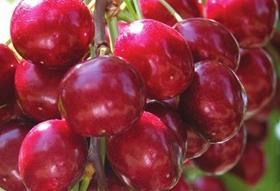
The warmest March and April in the history of the Pacific Northwest resulted in a record early start to the 2016 cherry season, with the first fruit picked on 18 May in southern Washington.
Earlier in May the Northwest Cherry Growers’ (NWCG) issued their initial forecast for the 2016 season, which predicted production would total 20.7m cartons. This figure would have made the 2016 crop the third-largest in industry history.
Estimates have been dropping steadily ever since, as it became apparent that fruit set was not as heavy as originally thought. By the end of May, the NWCG had revised the size of the 2016 crop to 18.4m cartons, 4.5 per cent lower than the 19.3m cartons shipped last year, due in large part to very light sets for both the Chelan and Bing varieties. Production for Rainier and other yellow cherry varieties is expected to be lower by more than 12 per cent at 1.5m cartons.
Whatever the 2016 cherry production ultimately turns out to be, it appears all but certain to fall short of 20m cartons for the second year in a row.
The reason behind this year’s relatively light Northwest cherry crop is thought to be the result of a “flash bloom” that occurred in late March when most of Washington’s trees suddenly burst into bloom within a single week, brought on by a spate of unusually warm weather.
“The entire Bing crop in Washington has a light set this year,” said NWCG president BJ Thurlby. “I’ve been hearing reports of just two to three tonnes per acre, when the normal would be five to six.”
There are good and not-so-good aspects to a compacted bloom. On the positive side, a flash bloom can lead to uniform fruit sizing, high sugar levels and exceptional flavor, which is apparently the case this year. The NWCG has been so encouraged by field reports that it has proclaimed 2016 to be a potential “vintage” crop year.
“This is a very clean crop with big sizes that’s showing little if any frost damage” explained Tim Evans of Chelan Fresh Marketing.
However, this year’s abbreviated bloom is expected to have as much as 90 per cent of the crop maturing within a six-week period, beginning around 6 June and running through to the middle of July. The NWCG also expects June’s production will likely exceed 10m cartons, which would amount to the second-largest tonnage ever for that month, trailing only the 12m cartons shipped in 2012.
“It’s lining up to be a solid crop this year for quality,” observed Randy Eckert of Yakima Fresh in mid-May. “Just how many cherries (the industry) can handle during June is the question.”
The cherry harvest is expected to continue at a relatively strong pace through the week of 11 July but fall off drastically during the remainder of the month, with very little fruit available in August. For most of the last decade, August has been a relatively strong cherry production month in Northwest – even running into September in 2012. If forecasts hold, this will be the second year in a row that the industry will pick very few cherries in August, leading to speculation that a new production trend may be emerging in the Pacific Northwest.
Read an extended version of this article in the June edition of Asiafruit.



